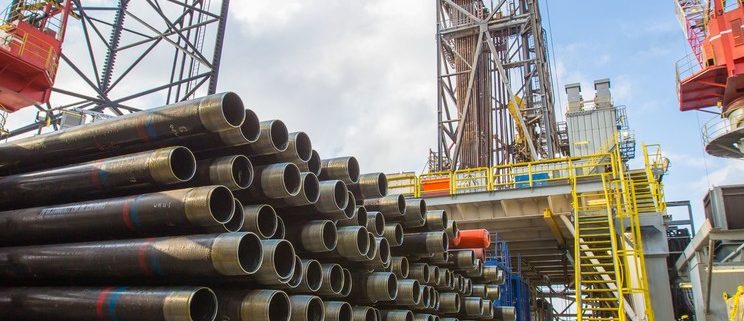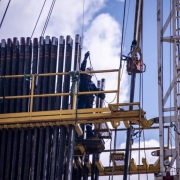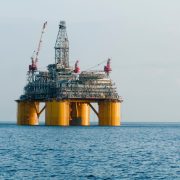Well Completion: Application and Installation Sequences of OCTG in Oil and Gas Wells
Introduction
Oil and gas exploration and production involve complex equipment and processes. Among these, the proper selection and use of tubular goods—drill pipes, drill collars, drill bits, casing, tubing, sucker rods, and line pipes—are crucial for the efficiency and safety of drilling operations. This blog aims to provide a detailed overview of these components, their sizes, and their sequential use in oil and gas wells.
1. Drill Pipe, Drill Collar, and Drill Bit Sizes
Drill Pipes are the backbone of the drilling operation, transmitting power from the surface to the drill bit while circulating drilling fluid. Common sizes include:
- 3 1/2 inches (88.9 mm)
- 4 inches (101.6 mm)
- 4 1/2 inches (114.3 mm)
- 5 inches (127 mm)
- 5 1/2 inches (139.7 mm)
Drill Collars add weight to the drill bit, ensuring it penetrates the rock effectively. Typical sizes are:
- 3 1/8 inches (79.4 mm)
- 4 3/4 inches (120.7 mm)
- 6 1/4 inches (158.8 mm)
- 8 inches (203.2 mm)
Drill Bits are designed to crush and cut through rock formations. Their sizes vary significantly, depending on the required borehole diameter:
- 3 7/8 inches (98.4 mm) to 26 inches (660.4 mm)
2. Casing and Tubing Sizes
Casing Pipe stabilizes the borehole, prevents collapse, and isolates different geological formations. It is installed in stages, with each string having a larger diameter than the one inside it:
- Surface Casing: 13 3/8 inches (339.7 mm) or 16 inches (406.4 mm)
- Intermediate Casing: 9 5/8 inches (244.5 mm) or 10 3/4 inches (273.1 mm)
- Production Casing: 7 inches (177.8 mm) or 5 1/2 inches (139.7 mm)
Oil Tubing is inserted inside the casing to transport oil and gas to the surface. Typical tubing sizes include:
- 1.050 inches (26.7 mm)
- 1.315 inches (33.4 mm)
- 1.660 inches (42.2 mm)
- 1.900 inches (48.3 mm)
- 2 3/8 inches (60.3 mm)
- 2 7/8 inches (73.0 mm)
- 3 1/2 inches (88.9 mm)
- 4 inches (101.6 mm)
3. Sucker Rod and Tubing Sizes
Sucker Rods connect the surface pumping unit to the downhole pump, enabling the lifting of fluids from the well. They are selected based on the tubing size:
- For 2 3/8 inches tubing: 5/8 inches (15.9 mm), 3/4 inches (19.1 mm), or 7/8 inches (22.2 mm)
- For 2 7/8 inches of tubing: 3/4 inches (19.1 mm), 7/8 inches (22.2 mm), or 1 inch (25.4 mm)
4. Line Pipe Sizes
Line Pipes transport the produced hydrocarbons from the wellhead to processing facilities or pipelines. They are chosen based on the production volume:
- Small Fields: 2 inches (60.3 mm), 4 inches (114.3 mm)
- Medium Fields: 6 inches (168.3 mm), 8 inches (219.1 mm)
- Large Fields: 10 inches (273.1 mm), 12 inches (323.9 mm), 16 inches (406.4 mm)
Sequential Use of Tubulars in Oil and Gas Wells
1. Drilling Stage
- The drilling operation begins with the drill bit breaking through the geological formations.
- Drill pipes transmit rotary power and drilling fluid to the drill bit.
- Drill collars add weight to the bit, ensuring it penetrates effectively.
2. Casing Stage
- Once a certain depth is reached, a casing is installed to protect the borehole and isolate different formations.
- Surface, intermediate, and production casing strings are run sequentially as drilling progresses.
3. Completion and Production Stage
- Tubing is installed inside the production casing to facilitate the flow of hydrocarbons to the surface.
- Sucker rods are used in wells with artificial lift systems, connecting the downhole pump to the surface unit.
4. Surface Transportation Stage
- Line pipes transport the oil and gas produced from the wellhead to processing facilities or main pipelines.
Conclusion
Understanding these tubular goods’ roles, sizes, and sequential use is essential for efficient and safe oil and gas operations. The proper selection and handling of drill pipes, drill collars, drill bits, casing, tubing, sucker rods, and line pipes ensure the structural integrity of the well and optimize production performance.
By effectively integrating these components, the oil and gas industry can continue to meet the world’s energy needs while maintaining high standards of safety and operational efficiency.






